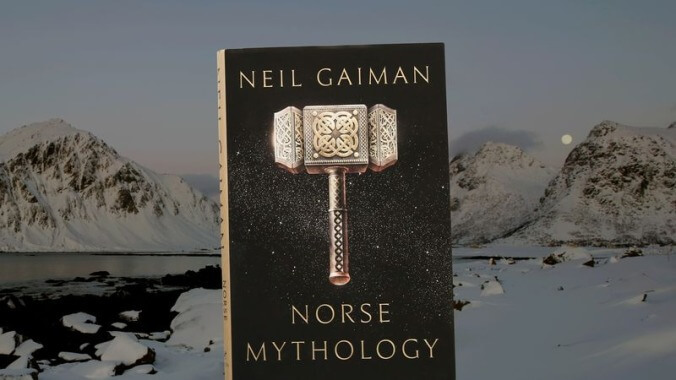Neil Gaiman picks up Thor’s hammer in Norse Mythology

Marvel has brought a certain strain of Norse mythology to the mainstream through Thor, Loki, and Odin’s family drama. And in a way, the franchise does justice to these three characters. They’re key players throughout traditional Norse stories, their original mannerisms not far off from how they’re portrayed in pop culture. Odin is the all-father, ever-questing for knowledge; Thor offers the gods incredible strength without much brain power; Loki is a master manipulator, as often out of favor with the rest of the gods as in it. Neil Gaiman’s Norse Mythology introduces readers to a deeper world, rooted in the traditions of northern storytelling. And what most of us know of Norse mythology only scratches the surface.
Gaiman’s not reinventing the wheel, but simply offers his modern take on the ancient tales. Unfortunately, that means it starts slowly, in the tradition of biblical writings, recounting characters, their relationships to one another, and the creation of everything. It is a tedious front-loading of details, but in fairness Gaiman, he works to adjust the worldview of his reader to that of ancient times with lines like, “The world is a flat disc, and the sea encircles the perimeter.” It helps to remember this when encountering the second and third times characters try to negotiate the goddess Freya’s hand in marriage in exchange for getting out of trouble, or when Thor is playing the role of meathead, dressing as a woman to get back his hammer.
Once the busywork is out the way, though, Gaiman hits his stride. The first significant story is “The Treasures Of The Gods,” which, most importantly, tells us how Thor got his hammer, Mjollnir. From there on out, Gaiman offers quick, easy reads. He plays into the folkloric traditions of the Norse tales, keeping lines straightforward but incredibly vivid.









![HBO teases new Euphoria, Larry David, and much more in 2026 sizzle reel [Updated]](https://img.pastemagazine.com/wp-content/avuploads/2025/12/12100344/MixCollage-12-Dec-2025-09-56-AM-9137.jpg)






























